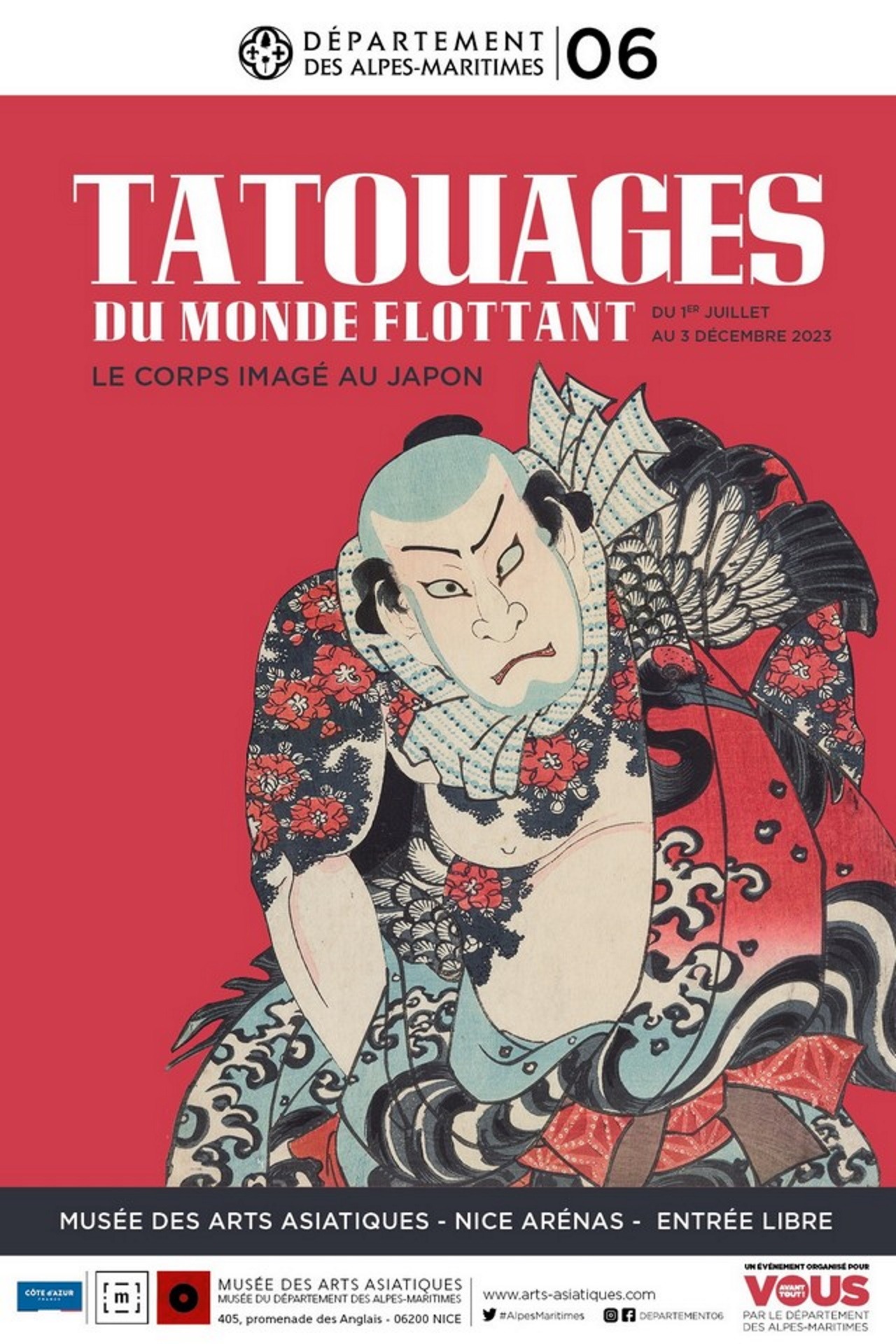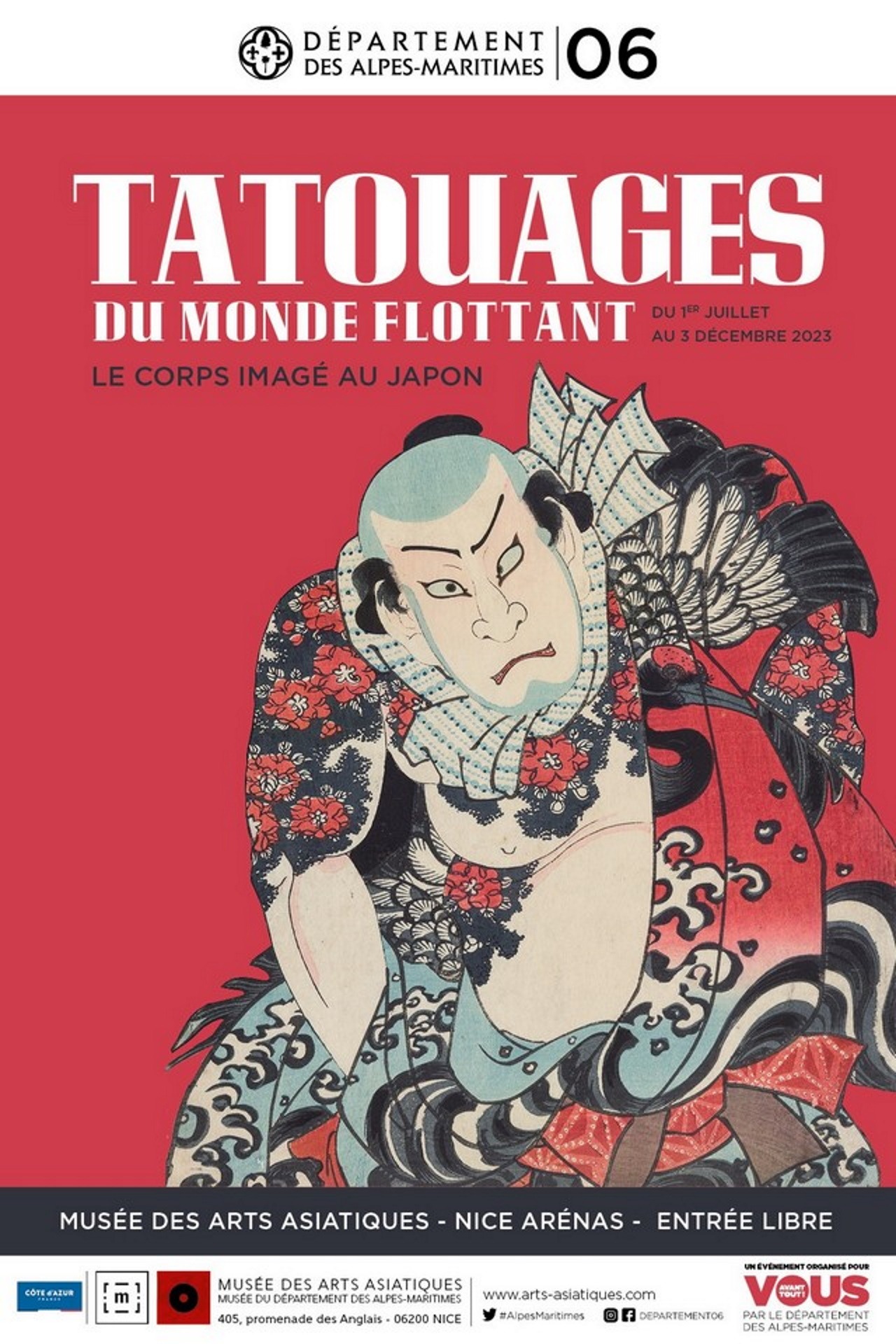Until 3 December, several photographs and a copy of Akimitsu Takagi’s first book are on show in the Musée des arts asiatiques de Nice exhibition on Japanese tattooing.
For the first time in a French museum, an exhibition is devoted entirely to traditional Japanese tattooing. Entitled “Tatouages du monde flottant” (“Tattoos of the Floating World”), this is a major event in the dissemination of knowledge about the art of irezumi. It is made possible by the work of Xavier Durand, whose collection is being shown for the first time. With the help of prints (many of them), etchings, photographs, travel accounts and more, the collector is offering an overview of irezumi, from the Edo period to the present day, for all those with a passion for tattooing, Japanese culture and art.
Two emblematic photographs of tattooing in Tokyo in the 1950s
Among all these works, two photographs by Akimitsu Takagi contribute to the narrative that is made of the history of art in the 20th century. The first shows members of a club for tattoo enthusiasts: the Edo Chōyūkai. This unusual club could be the oldest in the world. It brings together clients of several great masters of the time, including tattoo artists Horiuno II and Horiuno I.
Brought together by their shared passion for irezumi or horimono – the two Japanese names for traditional tattooing in Japan – these men and women were photographed at one of their gatherings in a public park in Tokyo. Takagi, who was in contact with them, couldn’t miss this public event. What is interesting, and what can be seen in other images, is that the photographer was not alone! A crowd of onlookers gathered around the waterfall to watch this exhibition, and many of them had cameras to capture the scene.
Horigorō II, tattoo maestro and close friend of Takagi
The second image in the exhibition shows another important figure of the period: Horigorō II. The master is in what appears to be his studio. Shirtless, revealing an impressive tattoo covering his chest, he is hard at work. Sitting on the floor, he is depicting the Buddhist deity Fudō Myōō on his client’s back. The drawing drawn is in fact from a print by the famous artist Tsukioka Yoshitoshi. Like all Japanese tattoo artists, Horigorō II uses the works of ukiyo-e artists as a repertoire of motifs to tattoo.
Horigorō II does, however, have the distinction of using an electric tattoo machine. Like other members of his family, who are also tattoo artists, he does not use the traditional manual technique of tebori to create his tattoos. The Western-inspired machine illustrates the introduction of modernity into this traditional world.
Takagi’s first book, a tribute to tattooing
Another item on display belonging to Akimitsu Takagi was the first edition of the writer’s first novel. Published in 1948 and entitled ‘Shisei Satsujin Jiken’, this book* was a success when it was first published. It launched Takagi’s career as a writer. Takagi chose the theme of tattoos for his plot, which depicts the murders of tattooed people in war-torn Tokyo. The investigation is the pretext for an immersion in this underground and mysterious world. A world that Takagi would later begin to document.
- Since translated into English and Italian.


